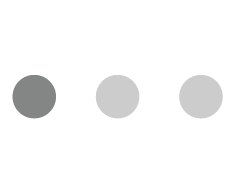If you think Mark Zuckerberg is just a tech genius who stumbled upon success, think again. The man is, at his core, a master salesperson. He didn’t just create Facebook; he sold the world on the idea of connecting, engaging, and sharing their lives online. A killer combo of vision, persuasive skills, and, most importantly, the right technology.
Let’s face it—we’re no Mark Zuckerberg. Not everyone can build a multi-billion-dollar empire from a college dorm room. But with the right tools, we can get pretty close. You need smart tech that can automate the grind, predict client needs, and make every interaction count.
That’s where Sales Agent Apps come in, combining human skills with cutting-edge technology to build empires. Let’s break down what a Sales Agent App does and, more importantly, how it has become a game-changer in the insurance sector.
The Unseen Struggles of Sales Agents
Being a sales agent in the insurance sector is no easy feat. Between endless calls, managing client interactions, and drowning in data, the daily grind can feel overwhelming. Here’s what they face:
- The Click-and-Dial Grind
Insurance agents often spend hours manually dialing leads. With only 100-200 calls a day, many leads remain untouched, leaving missed opportunities. - Conversations Everywhere, Chaos Everywhere
Juggling client chats across multiple channels like WhatsApp calls, and email without a Sales Agent App leads to inefficiencies, especially during high-pressure campaigns - The Never-Ending Data Deluge
Agents are buried in data tracking leads, archiving old ones, and managing reports—making it hard to prioritize and find actionable insights amid the paperwork. - Missed Leads from Lack of Integration
With third-party chat tools that don’t sync well with platforms like WhatsApp, leads slip through the cracks, lowering agent productivity and follow-ups.
The Game-Changing Solutions: Where Tech Steps In
Now, let’s look at how these hurdles were tackled and how the solutions brought real, measurable improvements:
1. Auto Dialler: Boosting Call Efficiency
Instead of manually clicking through leads, agents now have an automated system that dials out for them. The result? A dramatic increase in daily call volume—jumping from 100-200 calls per day to 300-400. That’s double the outreach, enabling agents to connect with more clients in less time and boosting their productivity.
2. WhatsApp Console: Streamlining Conversations
The introduction of the WhatsApp Console transformed the way agents manage customer interactions. Multiple projects, multiple agents, one platform—making it possible to handle client chats seamlessly. With dynamic templating and automated responses, agents can respond faster and more accurately during high-pressure campaigns. No more chat chaos, only smooth communication.
3. Simplified Data Handling: Reports Made Easy
With a range of enhancements such as lead archiving, common pool reevaluation, and a new sales report module, agents can now easily manage data without feeling overwhelmed. The sales report module provides valuable insights post-sale, helping agents validate leads faster. Tracking leads has become more efficient, freeing up agents to focus on conversions rather than paperwork. It is also seen that Insurance firms with well-crafted onboarding saw a 50% higher retention. Insurance Agents reported 35% less paperwork due to automation, freeing up more time for client interactions.
4. Integrated Chat Tool: Doubling Lead Count
When a custom chat tool with WhatsApp integration was introduced, it was a game-changer. According to a recent study, 74% of insurance customers appreciate receiving AI-generated tips when choosing insurance policies. With the help of AI custom chat tools, Agents went from managing 40-60 leads per day to handling 90-120 leads which is an increase of 35-40%. Now, they can manage WhatsApp and agent chats all in one place, eliminating the need for multiple platforms and maximizing their lead engagement potential.
5. User Experience & Intuitive Design: Making It Easy for Agents on the Go
Insurance sales agents are often out in the field, meeting clients face-to-face, which makes mobile-optimized, intuitive interfaces crucial for Sales Agent Apps. A good app isn’t just functional—it’s designed for seamless use, even for agents who aren’t particularly tech-savvy.
65% of insurance agents say that mobile access to sales tools significantly increases their productivity, Moreover, 85% of insurers are deploying CX initiatives throughout the customer journey, emphasizing the industry’s shift towards enhancing the customer experience through technology.
Conclusion:
Sales Agent Apps aren’t just tools—they’re powerful catalysts transforming how insurance agents navigate their daily challenges. From boosting call efficiency with auto-dialers to doubling lead engagement through integrated chat tools, the blend of automation and smart technology is revolutionizing the insurance industry, ensuring that every lead, every call, and every chat counts toward growth and provides a better customer experience
For those looking to stay ahead, the future of sales lies in harnessing the right technology to enhance human potential. It’s no longer just about working harder; it’s about working smarter, and Sales Agent Apps are leading the charge. At Mantra Labs, we’ve made all of this possible, offering our clients cutting-edge technology and CX consulting to help them thrive in this ever-evolving landscape.
Knowledge thats worth delivered in your inbox







